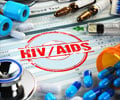AIDS continues to explode the African continent. But there is a woeful shortage of doctors and nurses in the region, coming in the way of providing life-saving drugs to AIDS patients
The scourge started there, it is generally believed. And its death dance continues unabated in the region. What little succour can come through medicines is also denied the unfortunate people.
Africa has increased the number of AIDS sufferers on treatment from 100,000 in 2003 to 1.3 million last year, but a lack of medical workers is preventing further expansion of drug programs, according to the report released Thursday by Medecins Sans Frontieres."The international community says it wants to achieve universal access, and in Khayelitsha we were coming close, but at a certain point things started to collapse," said Eric Goemaere, who heads the agency — also known as Doctors Without Borders — in that sprawling Cape Town township.
"We are absolutely saturated. We have come back to waiting lists and it feels again like we are losing the battle," he said.
Southern Africa is hardest hit by the AIDS epidemic, accounting for the vast majority of the 40 million infections and the daily death toll of 8,000. Despite the advances in AIDS treatment taken for granted in rich countries, more than 70 percent of Africans who need it are still waiting.
On an average day, about 200 AIDS patients flock to the clinic set up by Doctors Without Borders in Khayelitsha. Many others languish at home, not for lack of drugs but because there aren't enough health workers to administer them.
At the clinic in Khayelitsha — where about 30 percent of adults have the AIDS virus — nearly 6,000 people are currently receiving anti-retroviral therapy. But the number of new patients starting treatment each month dropped from 270 in May 2006 to 100 last December — mainly because of lack of health workers.
Advertisement
Mpumelelo Mantangana, a nurse at the clinic, says her workload has soared as other nursing staff have left for better-paid jobs in the private sector or abroad. She understands why — the work is exhausting and the pay is peanuts.
Advertisement
In tiny Lesotho, which is also ravaged by AIDS, there are just five doctors and 63 nurses per 100,000 people. In Malawi, there are two doctors and 56 nurses, and in Mozambique three doctors and 20 nurses.
The Doctors Without Borders report, which focused on the four southern African countries, made grim reading. It said that in the Thyolo district of Malawi, a single medical assistant sees up to 200 patients per day. In Mavalane district in Mozambique, many patients died during the two-month wait to start treatment, while in one of Lesotho's main hospitals, more than half the nursing jobs were vacant.
The report said that countries would only be able to cope with the crisis by "task-shifting" — allowing nurses to do work normally assigned to doctors, medical assistants to do the work of nurses and using more community workers.
Malawi is already doing this, and a new AIDS plan recently adopted in South Africa also shifts treatment away from hospitals to community-based care. Lesotho also has nurse-based treatment — but there simply aren't enough nurses.
The report also pointed the finger at donor countries, which pay for antiretroviral drugs and new clinics but don't provide for health workers' salaries to operate them.
It said the U.S. Millennium Challenge Account has committed an $140 million to improve physical infrastructure at health facilities. But no plans have been made to recruit the 600 additional health care workers needed to staff the facilities.
"People living with HIV/AIDS do not only need drugs and clinics; they need trained, motivated health care workers to diagnose, monitor and treat them," the report said.
That calls for a very different orientation both on the part of policymakers and also doctors themselves.
Source-Medindia
GPL/L










